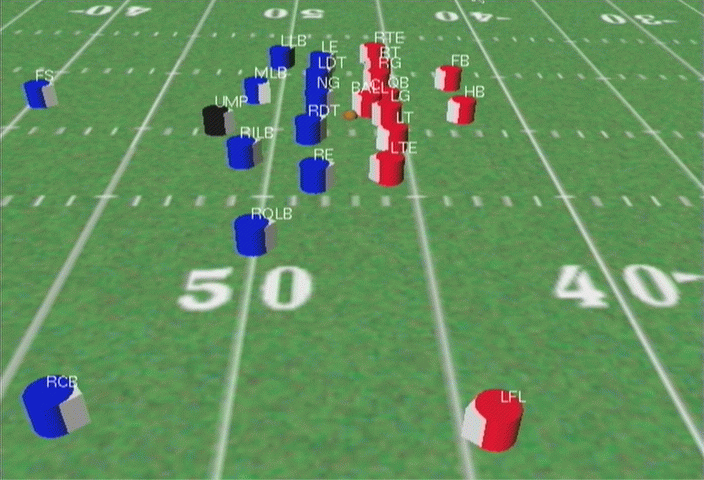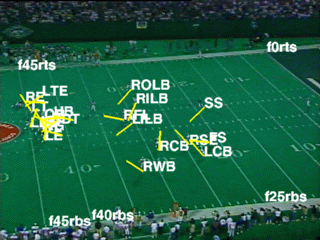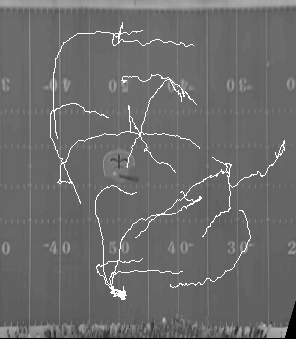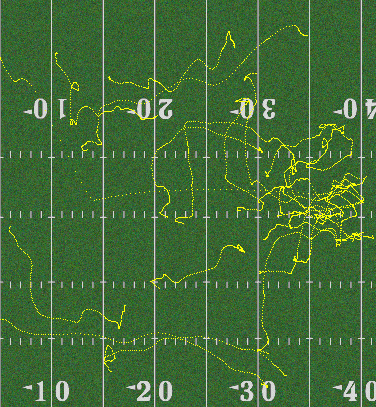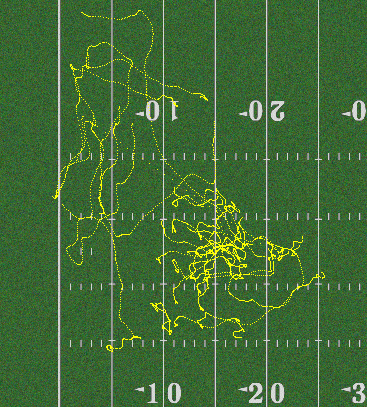The Data Although our automatic tracker can obtain about half of the player trajectories automatically, for our research on action recognition we wanted to start with data for all of the players. Below is a screen shot from software we wrote that allows a patient person to track all the players manually by following each player (and the ball) with the mouse. The system also allows the user to track the approximate orientation of each object.
This process is time consuming. In addition to all the players and their directions, the user must track some field points so the data can be transformed to the field coordinate system. The camera is panning and zooming throughout the play, though, and by the time the play is tracked there is actually significant error in the signal. The player motions are quite jittery when played back, even when the players in the original video are motionless. Shown below are additional problems with the data. two problems. In the left image a player (the SS) has fallen. Where should the person tracking the play mark the player position? A second problem is shown on the right. Where is the SS player exactly? Small shifts in the position lead to larger changes in the rectified data, but the person tracking needs to estimate where the center of the person is projected down onto the field in the video. There are other problems as well, but in short, it's sufficient to note that even though this data is acquired manually, it's actually quite noisy. The data that will be available within the next few years from companies like Trakus that use embedded helmet transmitters will provide far more accurate position and orientation information.
Once the data is obtained, we can display transform it and display the play on the field coordinate system, indicating player labels (also manually indicated) and object orientation.
The data overlaid on one video frame:
More data sequences The data can also be displayed as "chalkboard" images. Here's some automatically obtained data from the tracking system. Only some trajectories are available. Below, for comparison, are two fully-tracked plays generated using the manual tracking software.
So that's the data. We'd like to develop vision algorithms that can obtain all this data automatically, but for now we are using manually obtained trajectory information. In a few years, though, we are going to have systems that output perfect trajectories. The question, then, is what can we do with them? |
| Computers Watching Football Home |
Last modified: April 06, 1999
